The Beatles’ ‘Revolver’ Box Set: Was It Their Most Ambitious Adventure?
by Jeff Burger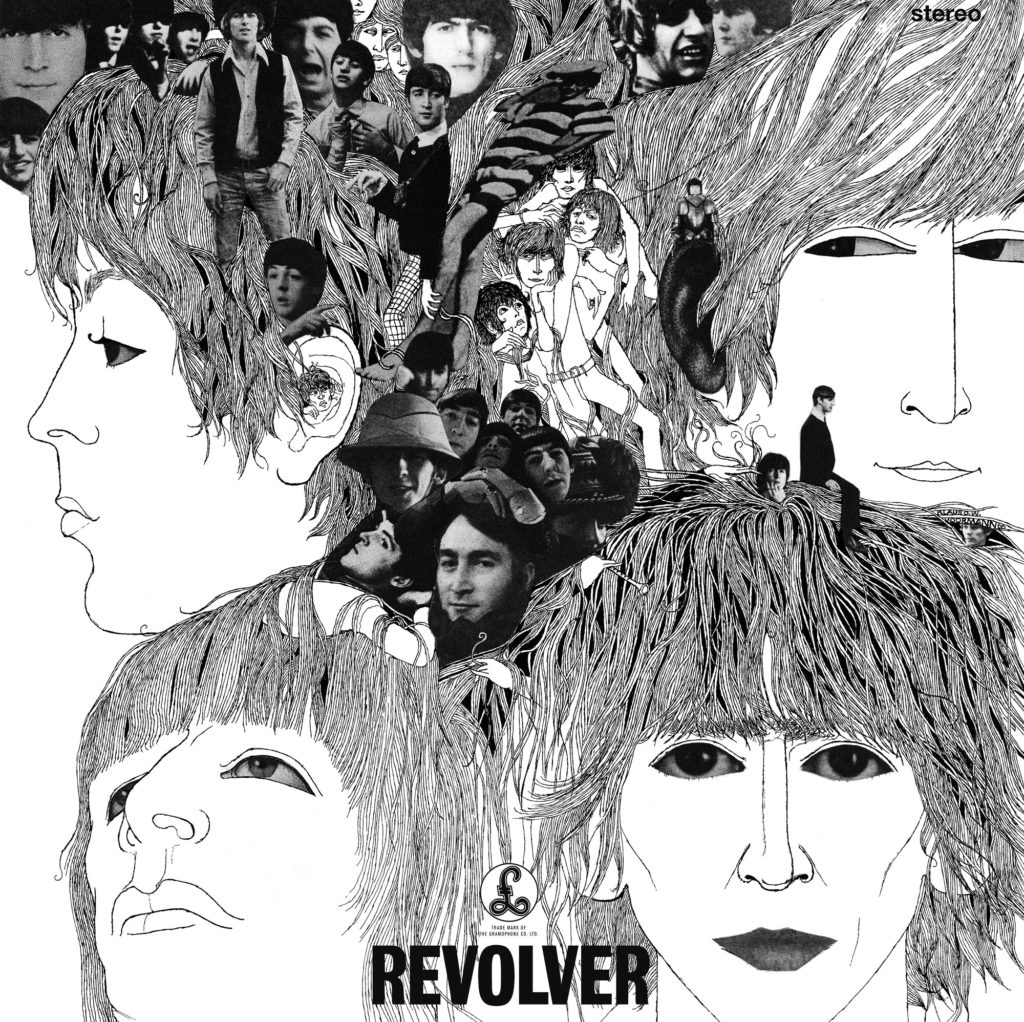 Can we pinpoint the time when the Beatles took their first giant step beyond creating extraordinary pop/rock love songs to chase even loftier ambitions? The answer is yes: it was April 1966, a mere three years after the U.K. release of their first album, Please Please Me, when the Beatles assembled at London’s EMI studios to begin work on Revolver, their seventh studio LP.
Can we pinpoint the time when the Beatles took their first giant step beyond creating extraordinary pop/rock love songs to chase even loftier ambitions? The answer is yes: it was April 1966, a mere three years after the U.K. release of their first album, Please Please Me, when the Beatles assembled at London’s EMI studios to begin work on Revolver, their seventh studio LP.
You can certainly sense their adventurousness in 1965’s great Rubber Soul, which employs such instruments as sitar and harmonium and features the Beatles’ most sophisticated arrangements and lyrics up to that time. But it is Revolver, which came out in August 1966, that finds the group moving firmly into a whole new world. Even Klaus Voormann’s iconic and Grammy-winning cover art signals that something has changed.
The album, which seems influenced by both psychedelia and Eastern philosophy, includes only two numbers with traditional-sounding love lyrics, both by Paul McCartney: the mournful “For No One” and the wonderfully melodic “Here, There and Everywhere.” A third McCartney number, the brass-infused “Got to Get You Into My Life,” sounds like another love song, but he has revealed that it’s “actually an ode to pot.”
Elsewhere, we have such tunes as “Dr. Robert,” which offers John Lennon’s portrait of a drug dealer; his trippy “Tomorrow Never Knows,” which begins by inviting you to “turn off your mind, relax and float downstream”; “Taxman,” George Harrison’s acerbic look at the British tax system; “Love You To,” his first full-scale venture into Indian music; his bright but discordant “I Want to Tell You”; and “Yellow Submarine,” a whimsical singalong number with Ringo Starr delivering the lead vocal.
Somehow, it all hangs together, though what most of these tracks have in common is…practically nothing. As Paul McCartney writes in a foreword to the book that accompanies a new “super deluxe” edition of Revolver, “One thing I am always proud of is how the Beatles’ songs were so different from each other. Some other artists found a formula and repeated it. When asked what our formula was, John and I said that if we ever found one, we would get rid of it immediately.”
Related: Revolver and that ’66 vibe
That attitude certainly pervades Revolver, on which the group discards conventions left and right. The production employs such techniques as looped and reversed tapes, multitracked guitars and adjusted speeds. The instrumentation includes a string section, horns, tabla, clavichord and vibraphone. Clearly, the distance between this album and the group’s early hits is vast.
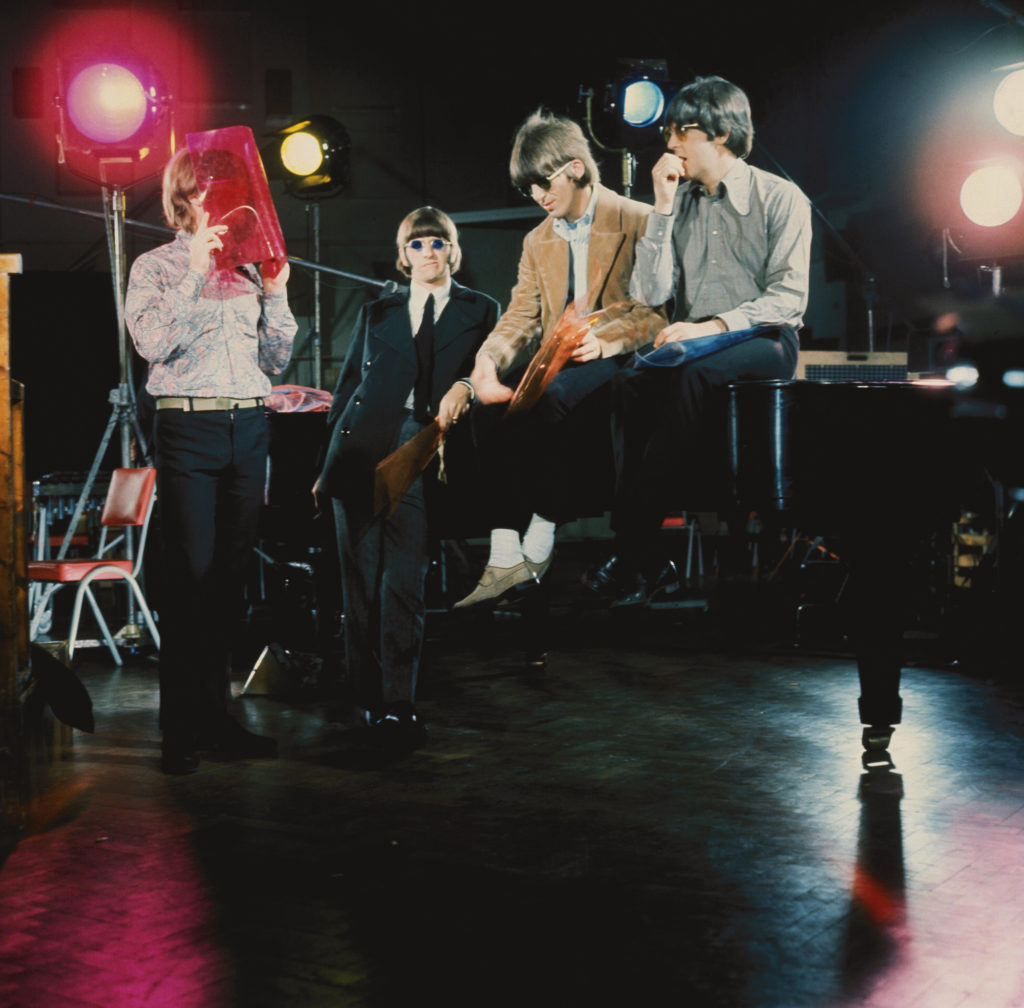
The Beatles in Abbey Road Studios on May 19, 1966, during filming of the “Paperback Writer” and “Rain” promotional films (Photo via Apple Corps Ltd.; used with permission)
You can take an in-depth journey through Revolver in the new edition—the latest in a series of mammoth boxed sets that over the last five years has embraced Sgt. Pepper’s Lonely Hearts Club Band, The Beatles (aka The White Album), Abbey Road and Let It Be. Like those anthologies, this one was largely overseen by Giles Martin, son of the late Beatles producer George Martin. It features five CDs, plus a beautifully illustrated LP-sized, 100-page hardcover book that, in addition to McCartney’s foreword, includes an introduction by Giles, an essay by drummer and film director Questlove and an article by Kevin Howlett on “The Road to Revolver.”
You’ll also find credits and detailed notes about every track; a piece about Voormann’s cover art and illustrations from his graphic novel about its creation; a story about the LP’s reception; and notes about the roles of mono and stereo recordings in 1966.
Speaking of which: the set (which is also available on vinyl) devotes its first three CDs to Martin’s new stereo mixes and the original mono versions of the album and the non-LP single that resulted from its sessions. As the book notes, the mono versions were the Beatles’ priority in 1966 and are the key to understanding how the group “intended record buyers to hear their music when it was made.” And the differences between stereo and mono extend beyond the number of channels. To cite just one of many examples, the mono version of “Got to Get You Into My Life” is 10 seconds longer than the stereo one and includes more brass instrumentation.
While rabid fans will be fascinated by such differences, even casual listeners are bound to appreciate the new stereo mixes. The music sounds noticeably brighter and sharper than before, and the vocals and instruments can be distinguished more clearly. The string octet on “Eleanor Rigby” practically jumps out of the speakers, as does the horn section on “Got to Get You Into My Life.” Both tracks from the single—“Paperback Writer” and ”Rain”—sound particularly enhanced as well.
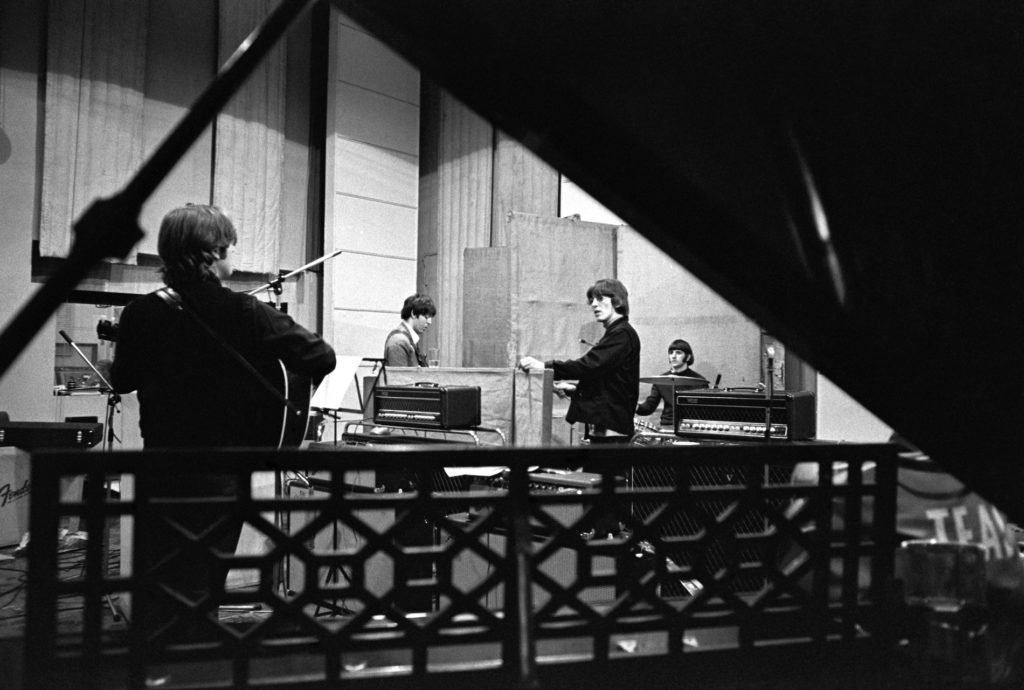
The Beatles in Abbey Road Studios during recording of the Revolver album in 1966 (Photo: Apple Corps Ltd.; used with permission)
You’ll find more to like on the set’s two remaining discs, which contain 31 rehearsals, early versions, work tapes and alternative mixes of Revolver’s songs. Granted, none of these recordings outshines the familiar ones (though a few are arguably as good), but the point here is to peek behind the curtain and observe the creative process. As you’ll hear, the Beatles took quite a few side trips on the road to the final product. A take of “Rain,” for example, shows how different it sounded before it was slowed down for the master recording. John Lennon’s acoustic work tape for “Yellow Submarine”—which begins with him singing, “In the place where I was born, no one cared”—seems less like a children’s song than an outtake from the confessional John Lennon/Plastic Ono Band.
Related: That John Lennon-sung ‘Yellow Submarine’ demo
There are a few things to grumble about regarding this release. Unlike all the other “super deluxe” Beatles boxed sets that have been issued in recent years, this one includes no Blu-ray with a surround-sound mix. (A Dolby Atmos version is available digitally, but that’s a separate purchase.) Also, you can’t help but suspect that the material is spread over five CDs to help justify the price tag. The total playing time is just over 162 minutes, which means this music could have easily fit on three discs or, with a tiny bit of cutting, on two.
Those gripes notwithstanding, this new edition of Revolver offers a superlative look at one of the greatest albums in the Beatles catalog and, in fact, in the entire history of rock.
The expanded editions are available in the U.S. here and in the U.K. here.

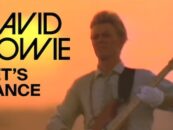

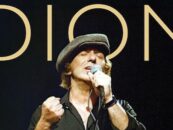


1 Comment so far
Jump into a conversationGreat music for sure, a few years ago “Rolling Stone” listed it as #1 in their list of the Top 500 Albums of All-Time. As the author mentioned there is not an added Blu Ray Surround Disc like the other Beatles’ Deluxe packages, Sgt Peppers, White Album, Abbey Rd and Let it Be. Revolver is arguably the Beatles’ Best Work and the missing surround disc takes a lot of the oomph away from this release. Someone at Apple Corps really dropped the ball here.